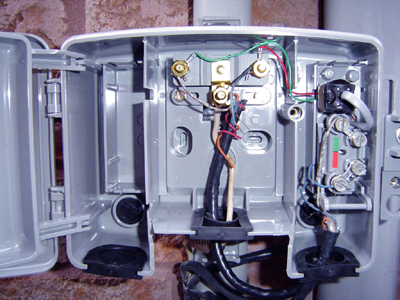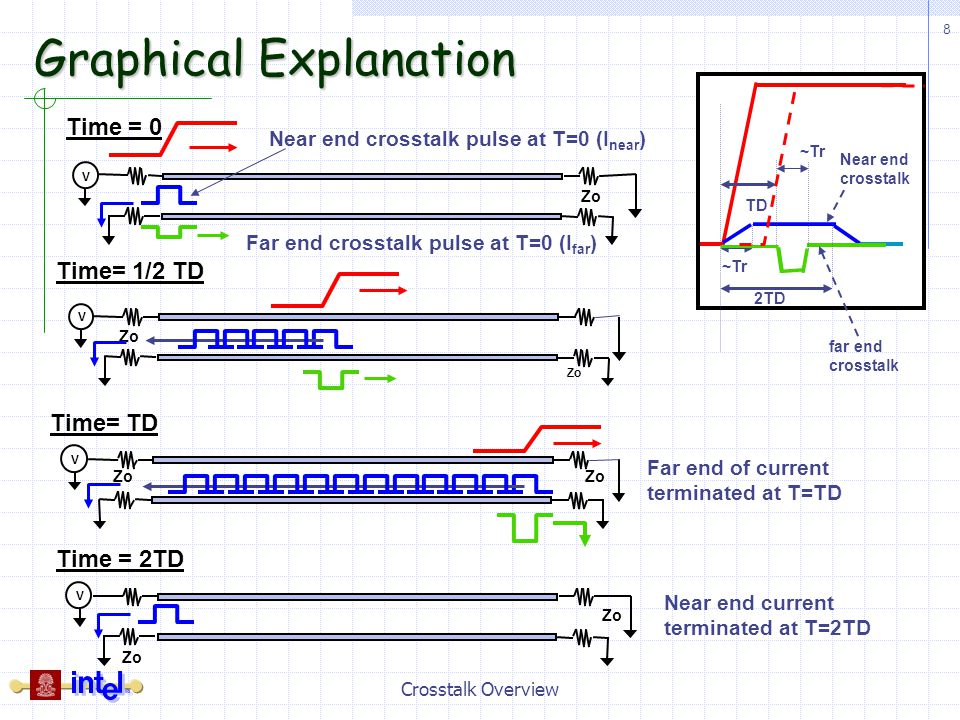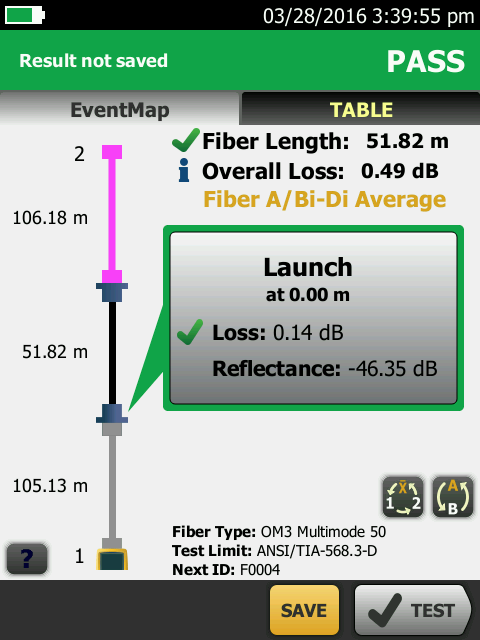Network Cable Certification uses specifically designed test equipment to verify a copper or fiber network cable will perform at the level expected or needed. It is simply not enough to plug a cable in and expect your network to perform at its highest level. Of course the ISP; Frontier, Comcast, etc. will set the bandwidth and speed. From here on out your connections, cable type, routing methods, environment, and more can cause enough issues for you to have little to nothing by the time the data makes it to your computer. .
It starts at your home or business “Demarc”, which is short for Demarcation. This is the location on your home where the signal from the ISP becomes yours. This is a connection usually on the outside of your home.

Your home phone demarcation box likely looks like this. (What’s a home phone?)
From here the data signal will travel through the wires to the Structured Cable panel such as this one.
Home Structured Cable Panel
If your home is older or the cabling was done incorrectly, these wires will go straight to a wall jack or port. In much older homes, and horrifying new installations by the unknowing, you can even see “daisy chain” wiring, where the first wire is brought to a jack then jumped from this jack to the next, and to the next. This will work fine for dial-tone, however will not work on a data network.
TESTING NETWORK CABLES IS VITAL TO PERFORMANCE
All Network Cabling needs to be tested before use. The common tests are:
- Continuity Test; This is the simplest test. You are just confirming each wire in the cable have a connection at the other end. You could use an ohmmeter for this, but the common tool is a network continuity tester like the one shown. These are inexpensive and can be purchased at Home Depot.
- Pair Test: This test is a little more complex, but not too much. This test assures the pairs are correct to TIA standards A or B. The same tool you used for continuity testing will test pairs.

- NEXT, or Near End Cross Talk. Wires carrying current create an electromagnetic field. The electromagnetic field is induced or inducted onto an adjacent set of wires in the same network cable and this is not wanted. This is unwanted and can cause serious performance issues with any network. NEXT testing checks for data that has “jumped” or imposed itself from one wire onto another wire. This can be caused by many factors with the most common being improperly installed data connections. There is a reason you cannot untwist the wires in a network cable. NEXT testing is requirement for any network where performance is desired, and demanded. This testing is where this gets a bit more complicated, and considerably more expensive for the do-it-yourselfer. The reason for this is the equipment to measure NEXT can run in the multiple ten’s of thousands of dollars. Much less expensive to have a company who owns this meter do this test for you. We have this equipment.

Illustration of Cross Talk in Network Cabling
FIBER OPTIC TESTING
Fiber Optic Cabling not long ago was esoteric and far too expensive for the average user or even small business. The growing popularity of Fiber Optic coupled with extremely high bandwidth capabilities is creating more demand and the price is dropping. Fiber Optic cable uses a glass (or plastic) fiber to send signals via modulated light. With the sheer volume of bandwidth being consumed and demanded by businesses and consumers, Fiber Optic is poised to take the place of the “limited” bandwidth capabilities of Fiber Optic.
OTDR
Bi-directional testing of fiber links for Tier 2 (OTDR) testing is not only required by industry standards and most manufacturers for warranty, it’s also the only way to know the actual overall loss for a link. That’s because measuring the loss of fiber connectors and splices, as well as overall link loss, depends on the test direction. Testing a fiber link in one direction can give you different results than testing the same fiber link in the opposite direction.

Because of the significant time and cost involved in testing from both ends, technicians often try to save as much time as possible by testing all links from one end before moving to the other end. Unfortunately this method does not work. To accurately test a fiber link in both directions, the launch and tail cords must remain in their initial measurement positions (even the standards say so) during both tests. But that is simply not possible if you test all the links from one end before moving to the other.
SOLUTION
You don’t have to worry about understanding any of this technical jargon. Just give us a call, we can handle all of this and more when it comes to your Network System and in fact all of your technology. We have the tools, the test equipment, the training and the experience to exceed your expectations. It is why the Hampton Inn, Pacific Raceways and more, have entrusted us with their network infrastructure and network needs.
We are at your service.



